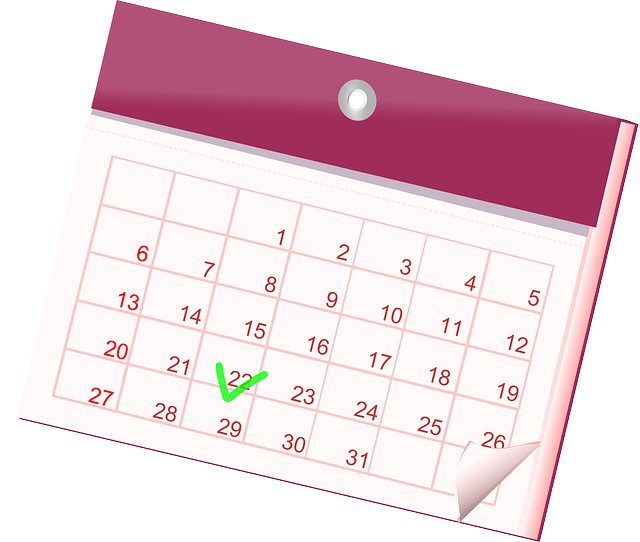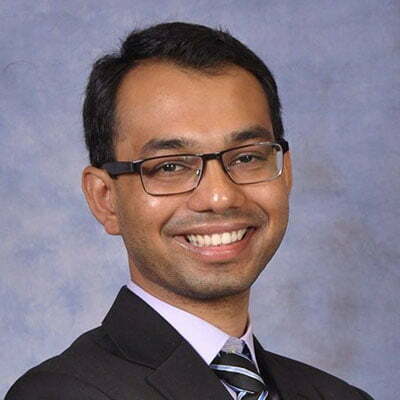The information on this website should not be considered medical advice.
This website contains affiliate links, and we may be compensated for referrals.
Introduction:
I am a board-certified internal medicine physician and I currently work as a hospitalist on the east coast. I went to Frank H. Netter School of Medicine and then went to North-Shore LIJ for my internal medicine residency. My journey to becoming a physician was filled with obstacles and struggles. I applied to 40 U.S. allopathic medical schools and was interviewed and eventually accepted by only one. I credit my success to my persistence, hard work, and most importantly, surrounding myself with a supportive and nurturing community.
According to the AAMC Applicant Matriculant Data, the total number of U.S. first-time applicants was 46,758 and the total acceptees were 23,711 [1]. This represents an acceptance rate of 50.7% for the 2021 application year. As you can see, getting into a U.S. medical school is a very competitive process and it is crucial that applicants, especially the underdogs, take the right path to get that coveted acceptance letter. In this guide, I hope to share my wisdom as a medical school applicant and interviewer for my allopathic medical school, and help maximize your chances of fulfilling your dream.
Before applying, know your why:
The following are some of the things admissions committees look out for:
- 1) Start with a moment in your life that inspired you to pursue medicine
- 2) Showcase parts of your applications that demonstrate your commitment to medicine
- 3) Include challenges you overcame in your pursuit
- 4) Discuss how you will use what you learned to become a compassionate and well-rounded physician
Another pro-tip for interviews: keep most of the responses open-ended so that the interviewer can ask follow-up questions. Knowing your “why” will also help you with crafting a solid and memorable personal statement.
Prerequisites: Major of study and courses
The required courses are:
- Introductory Physics I & II (8 credits)
- General Biology I & II (8 credits)
- Organic Chemistry I & II (8 credits)
- Inorganic Chemistry I & II (8 credits)
- Biochemistry (usually only one semester or 4 credits)
- Psychology (4 credits)
GPA and MCAT
According to the AAMC data, the average cumulative GPA for matriculants is 3.74 and their science GPA is 3.67. The average MCAT score for matriculants is around 512 with 128 being the average score in each of the four sections. I would recommend spending an average of at least 200 – 300 hours of preparation for the MCAT. The MCAT can be taken between January to September, but most applicants take it the spring before the admissions cycle.
(Read: How to Study for the MCAT.)
MCAT scores and GPA are only one aspect of the application, and they do not paint a holistic picture of who you are as a person. The AAMC wants to matriculate well-rounded physicians because these individuals have considered all possibilities as it pertains to their career trajectory and are making an informed decision. Additionally, these individuals tend to have better coping mechanisms and can provide better care to their patients. As an admissions committee interviewer, I am often interested in learning about your extracurricular activities because for me, this is a true reflection of your commitment and dedication to medicine. The AMCAS application has a section dedicated to listing up to 15 activities. There are numerous extracurriculars that students can pursue. Some of these include shadowing physicians, studying abroad, research, scribing, leadership roles, etc.
(Read: 5 Ways to Get Into Research Before Medical School.)
Many applicants have questions regarding the number of hours they need in each section. Quality of experience and the way you portray your activity is far more important than the quantity of hours. Medical schools are looking for a long-term commitment to a particular endeavor. Too often, I have seen applicants pursue activities for a couple of months and then switch to another activity. These students are simply trying to complete a “checklist” of activities that they believe will give them a competitive advantage. However, this often backfires because there is no such thing as a standardized checklist. My advice is to pursue activities that will add meaning to your life and will allow having an interesting story. I would recommend that second and third-year undergraduate students start volunteering at a local hospital at least once a week. This will give an early exposure to the field of medicine and help secure letters of recommendation from physicians. I also recommend pursuing a research project to gain exposure to the academic side of medicine. This will help you become an effective clinician and help you do well on the MCAT because it will train your critical thinking and analytical skills.
Researching and picking medical schools:
One of the best tools for researching medical school is called the MSAR (Medical School Admission Requirements). This is an online database that includes a wealth of information about each individual LCME-accredited medical school, with information directly provided by the medical school admission offices. It includes aggregate data that helps applicants gauge their ranking relative to the average matriculant. I personally used the MSAR data, specifically the minimum MCAT or GPA scores, when applying to medical schools. It is recommended not to apply to schools if your MCAT or GPA ate below the 25th percentile in each category. If your scores are low, these metrics can help you narrow your list.
If your scores are above average, I would recommend thoroughly reviewing the individual strengths of the curriculum and the mission statement to determine whether the program will help you reach your potential. I would highly recommend subscribing to this resource toward the end of your third year or several months before you plan to apply. A one-year subscription costs around $30 and is updated on an annual basis.
A common question that I often get asked is whether applicants belonging to an over-represented in medicine (ORM) group should apply to under-represented in medicine (URM) friendly programs? The AAMC designated African Americans, Mexican Americas, Puerto Ricans and Native Americans as URM. If you fall into one of these categories, then I would recommend researching summer enrichment programs that would give you exposure to basic science coursework and clinical medicine prior to starting medical school. If you are ORM, then I would still apply to URM friendly schools only if you fit their mission, and I would focus on writing a compelling personal statement.
It is important to apply broadly, and it is a mistake even for top-scoring applicants to apply to less than 20–30 schools. If your GPA and MCAT are not competitive, it is beneficial to save up money and apply to upwards of 40-50 schools. One of the things that helped me with this process was making an Excel spreadsheet to keep track of average GPA and MCAT scores. In addition, I had a section where I wrote down the unique aspects of the curriculum and incorporated interview-related tips from Student Doctor Network. (Check out our article on med school application financing here.)
Application Timeline:
The most important key to remember is that medical school admission is on a rolling basis. The best way to optimize your chances of getting accepted, especially if you are an underdog, is by submitting your application early. I advise my clients to start meeting with their pre-health advisor toward the end of their second year. In January of their third year, I would start requesting letters of recommendation (LOR) and give the writers at least 6-8 weeks to write a compelling letter.

Most medical schools require two letters from science professors who taught you, and prefer to see letters from employers, supervisors, mentors, and other individuals who know you well. Additionally, when the applications open for editing, applicants should follow the specific instructions to send their transcripts to the application services; this can take upwards of a month, so it is important to do this as soon as possible.
AMCAS
TMDSAS
AACOMAS
Secondaries
Casper and SJT:
Interviews
Typically, medical schools will start extending interview invites toward the end of July or early August. In general, medical schools will interview the majority of the candidates between September and January. Applicants should begin preparing for interviews as soon as possible, including obtaining a suit, access to an appropriate computer and environment for virtual interviews, and practicing interview questions.
Acceptances
Interview and post-interview dos and don’ts:
Finally, your hard work is starting to pay off. I remember feeling thrilled when I got my first interview invite. You should definitely take the time to celebrate this milestone. Now, you might be wondering how to prepare for a medical school interview.
The first thing I would recommend is going on to Student Doctor Network (SDN) and checking out the school-specific threads. One great thing about being a part of a community is that you can learn from others who were in your shoes not too long ago. There are post-interview threads that detail experiences including questions that were asked; reviewing these will help you feel mentally prepared for the interview day. I would also recommend thoroughly reviewing your application, especially your extracurriculars and personal statement. The key will be to be able to link these different experiences into a cohesive narrative that would clarify “Why medicine?” I would recommend doing mock interviews with your undergraduate faculty members or pre-health advisor. They don’t necessarily need to be science faculty members. I would give them a bunch of questions that you found from SDN school-specific thread.
There are different formats of the medical school interviews ranging from traditional interviews to group interviews to multiple mini-interviews. The traditional interview is a one-on-one interview with a faculty member that generally lasts for 30-45 minutes. Traditional interviews can be either open or closed: open means that the interviewer has access to your file whereas closed means they learn about you only from your answers.
Another format is group interviews. In a group interview, there are more than 2-5 candidates who will be interviewed by 1-3 faculty members. Usually, these interviews are focused on presenting your team with scenarios and they assess your ability to collaborate in a group.
The last format is MMI, which involves 5-10 different stations with a specific question or a scenario. The MMI is a closed interview format, where your interviewer has not reviewed your application. In my opinion, this is the best format because it allows the interviewer to objectively assess your nonverbal communication skills, moral compass, analytical skills, and ability to think on your feet.
Preparation and familiarity with the interview format are key to acing your interview. I would also recommend writing a thank you note to the interviewer within 48 hours of your interview unless the medical school instructs otherwise. I would also recommend not writing a Letter of Intent post-interview until you receive their decision.
Once your interview is complete, a school will usually send you a decision within 4-6 weeks. Most schools will call or email with an acceptance, rejection, or waitlist. Waitlist movement is slow at first and school-dependent. In April, those carrying multiple acceptances must narrow their selection to one school choice. At this time, waitlist movement begins to pick up into early and mid-May. Do not lose hope if you are on multiple waitlists: it is possible to be accepted up until the first day of classes.
If you are not accepted, it is best to take time off and work on your application rather than immediately re-applying. Many medical schools offer feedback to those that are rejected, especially if the rejection is post-interview. Talk to your mentors and advisors about your application and follow the advice given to you before starting another application cycle.
Finding your “perfect fit”
I hope this guide helps you achieve your dream acceptance letter. If you would like to connect, you can email me at [email protected] or check out my website UnderdogMedCoach.com to schedule a complimentary 15-minute session to discuss ways I can help you get to the next level.
Dr. Anish Desai is a board-certified internal medicine physician and currently works as a hospitalist on the east coast. He went to Frank H. Netter School of Medicine and then went to North-Shore LIJ for an internal medicine residency.





Facebook Comments